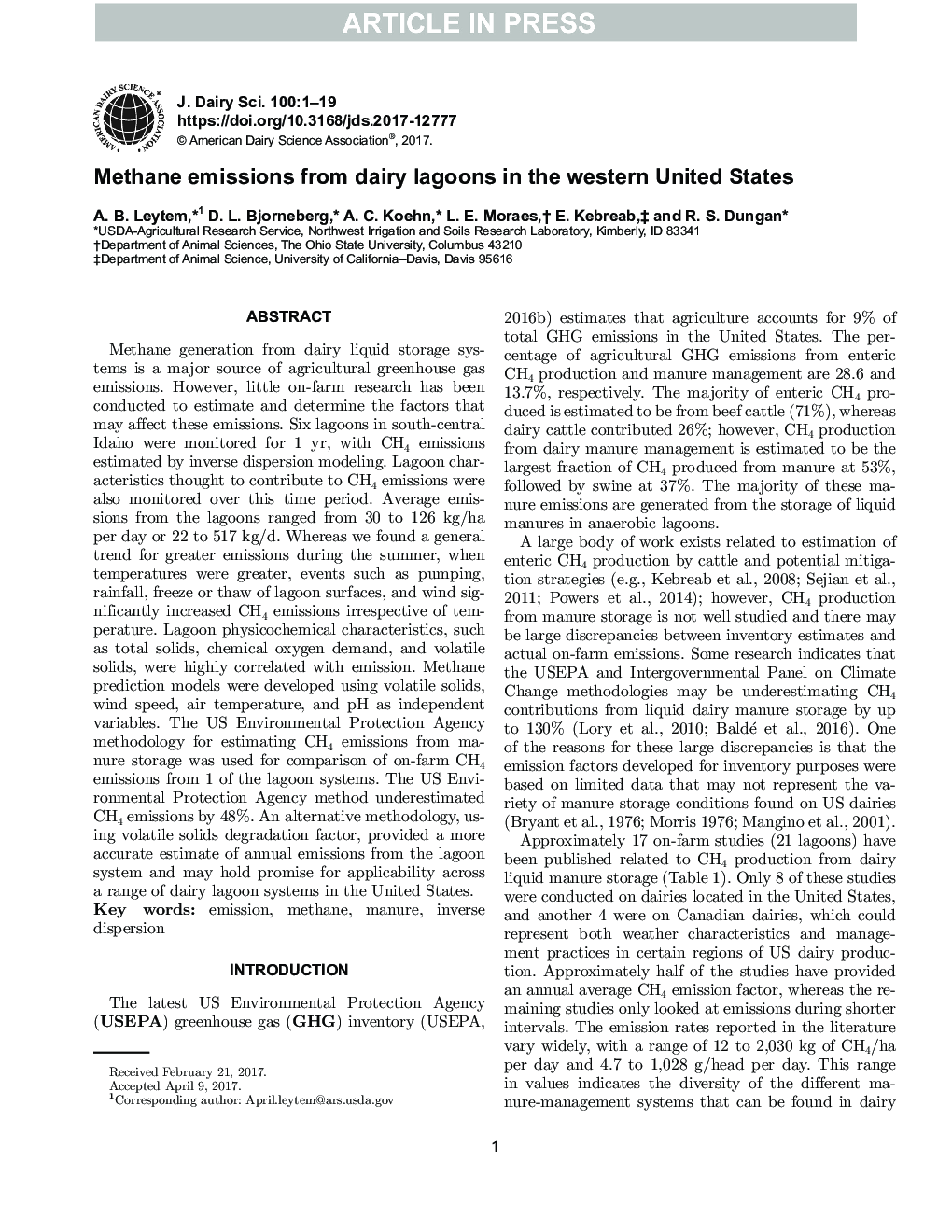| Article ID | Journal | Published Year | Pages | File Type |
|---|---|---|---|---|
| 5541955 | Journal of Dairy Science | 2017 | 19 Pages |
Abstract
Methane generation from dairy liquid storage systems is a major source of agricultural greenhouse gas emissions. However, little on-farm research has been conducted to estimate and determine the factors that may affect these emissions. Six lagoons in south-central Idaho were monitored for 1 yr, with CH4 emissions estimated by inverse dispersion modeling. Lagoon characteristics thought to contribute to CH4 emissions were also monitored over this time period. Average emissions from the lagoons ranged from 30 to 126 kg/ha per day or 22 to 517 kg/d. Whereas we found a general trend for greater emissions during the summer, when temperatures were greater, events such as pumping, rainfall, freeze or thaw of lagoon surfaces, and wind significantly increased CH4 emissions irrespective of temperature. Lagoon physicochemical characteristics, such as total solids, chemical oxygen demand, and volatile solids, were highly correlated with emission. Methane prediction models were developed using volatile solids, wind speed, air temperature, and pH as independent variables. The US Environmental Protection Agency methodology for estimating CH4 emissions from manure storage was used for comparison of on-farm CH4 emissions from 1 of the lagoon systems. The US Environmental Protection Agency method underestimated CH4 emissions by 48%. An alternative methodology, using volatile solids degradation factor, provided a more accurate estimate of annual emissions from the lagoon system and may hold promise for applicability across a range of dairy lagoon systems in the United States.
Related Topics
Life Sciences
Agricultural and Biological Sciences
Animal Science and Zoology
Authors
A.B. Leytem, D.L. Bjorneberg, A.C. Koehn, L.E. Moraes, E. Kebreab, R.S. Dungan,
